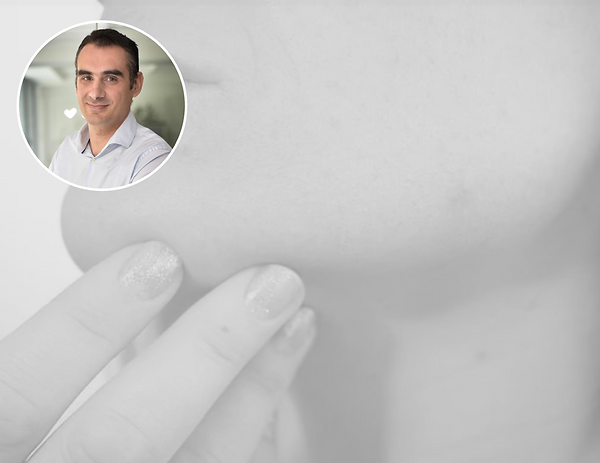Journal of Health and Medical Sciences
ISSN 2622-7258




Published: 10 February 2021
Factors Underlying Perceptions of Quality of Life Among Acne Patients in R. N. Macedonia
Ljupcho Efremov, Aneta Petrusevska, Vera Dimitrievska, Valentina Simonovska
University of American College Skopje (Republic of North Macedonia), MIT University (Republic of North Macedonia), University of American College Skopje (Republic of North Macedonia), University “Goce Delchev” Shtip (Republic of North Macedonia)

Download Full-Text Pdf
10.31014/aior.1994.04.01.152
Pages: 23-28
Keywords: Acne Patients, Perceptions, Quality of Life, Factors
Abstract
Introduction: Acne vulgaris is a disorder of the pilosebaceous units. It is a chronic inflammatory dermatosis notable for open/closed comedones, papules, pustules, nodules. It is characterized by open comedones, closed comedones and pustular nodules. Aim of study: To examine factors underlying the quality of life of people with acne. Materials and method: A total of 576 respondents were included in the study. Acne specific Quality of Life questionnaire was used for this purpose. A prospective cross-sectional study was conducted, performed in private dermatological clinic as well as on-line. All analyses were conducted by using the SPSS.26 for Windows. Results and Discussion: 5.7 % were males and 94.3 percent were females. About 69.4% were aged between 15-25; 16.7 % between 26 to 30; 8.8% between 31 to 35 years old. Quality of life and emotional perception towards the social environment is demonstrated by the three components (self-perception of discomfort, functionality, and social factor). The reliability levels for the three components were .858 for self-perception of discomfort, .779 for functionality and .745 for the social factor. The factor analysis discovered three underlying factors: self-perception of discomfort, social factor and functionality in daily life. Conclusion: The findings confirm the general notion that people with acne have problems in quality of life and therefore special attention to psychological intervention should be given in the treatment of acne.
References
Pochi, P. E. (1990). The pathogenesis and treatment of acne. Annual review of medicine, 41(1), 187-198.
Kaushik, M., Gupta, S., & Mahendra, A. (2017). Living with acne: belief and perception in a sample of Indian youths. Indian journal of dermatology, 62(5), 491.
Pawin, H., Beylot, C., CHIVOT, M., FAURE, M., Florence, P. O. L. I., REVUZ, J., & DRÉNO, B. (2004). Physiopathology of acne vulgaris: recent data, new understanding of the treatments. European Journal of Dermatology, 14(1), 4-12.
Cunliffe, W. J., Holland, D. B., & Jeremy, A. (2004). Comedone formation: etiology, clinical presentation, and treatment. Clinics in dermatology, 22(5), 367-374.
Post, M. (2014). Definitions of quality of life: what has happened and how to move on. Topics in spinal cord injury rehabilitation, 20(3), 167-180.
World Health Organization. (1947). The constitution of the world health organization. WHO chronicle, 1, 29.
Spitzer, W. O. (1987). State of science 1986: quality of life and functional status as target variables for research. Journal of chronic diseases, 40(6), 465-471.
Chernyshov, P. V., Petrenko, A., & Kopylova, V. (2018). What health-related quality of life factors influence the decision of patients with acne to visit a dermatologist?. The Journal of clinical and aesthetic dermatology, 11(7), 21.
Vilar, G. N., Sobral, J. F., & Santos, L. (2015). A qualidade de vida, autoestima e fatores psicossociais em adolescentes com acne vulgar. An. Bras. Dermatol, 90(5), 622-629.
França, K., & Keri, J. (2017). Psychosocial impact of acne and postinflammatory hyperpigmentation. Anais Brasileiros de Dermatologia, 92(4), 505-509.
Durai, P. C. T., & Nair, D. G. (2015). Acne vulgaris and quality of life among young adults in South India. Indian journal of dermatology, 60(1), 33.
Eyüboglu, M., Kalay, I., & Eyüboglu, D. (2018). Evaluation of adolescents diagnosed with acne vulgaris for quality of life and psychosocial challenges. Indian journal of dermatology, 63(2), 131.
Ismail, K. H., & Mohammed-Ali, K. B. (2012). Quality of life in patients with acne in Erbil city. Health and Quality of life Outcomes, 10(1), 1-4.
Jones‐Caballero, M., Chren, M. M., Soler, B., Pedrosa, E., & Penas, P. F. (2007). Quality of life in mild to moderate acne: relationship to clinical severity and factors influencing change with treatment. Journal of the European Academy of Dermatology and Venereology, 21(2), 219-226.
Gupta, M. A., Johnson, A. M., & Gupta, A. K. (1998). The development of an Acne Quality of Life scale: reliability, validity, and relation to subjective acne severity in mild to moderate acne vulgaris. Acta dermato-venereologica, 78(6).
Al-Shidhani, A., Al-Rashdi, S., Al-Habsi, H., & Rizvi, S. (2015). Impact of acne on quality of life of students at Sultan Qaboos University. Oman medical journal, 30(1), 42.
Kotekoglu, D., Parlakdag, A., Koramaz, F. S., Varol, G., Aslankoc, V., Bozkurt, S., & Alpsoy, E. (2020). Internalized stigma in acne vulgaris and its relationship with quality of life, general health, body perception, and depression. Nigerian Journal of Clinical Practice, 23(9), 1289.
Magin, P., Adams, J., Heading, G., Pond, D., & Smith, W. (2008). Experiences of appearance‐related teasing and bullying in skin diseases and their psychological sequelae: results of a qualitative study. Scandinavian journal of caring sciences, 22(3), 430-436.
Hazarika, N., & Archana, M. (2016). The psychosocial impact of acne vulgaris. Indian journal of dermatology, 61(5), 515.



